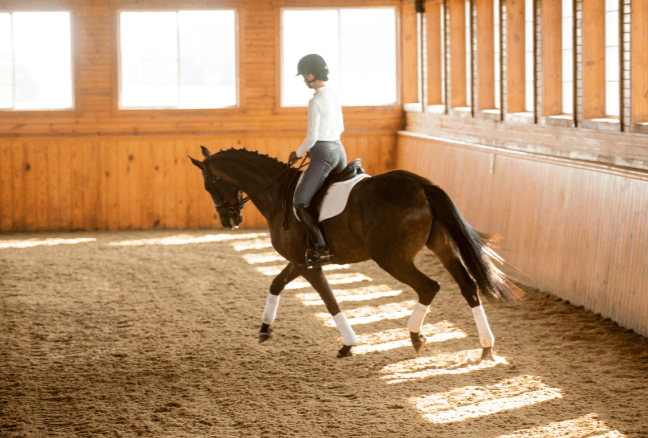How can I teach my horse pole bending?

Introduction to Horse Pole Bending
Pole bending is a dynamic and thrilling timed event often featured in rodeo competitions, designed to showcase the agility and speed of a horse. Teaching your horse pole bending involves systematic training to navigate a series of six poles, arranged in a line, at a gallop. The objective is to weave through the poles without knocking them over, which requires precision, control, and teamwork between horse and rider. This article offers comprehensive insights into the techniques and practices essential for anyone looking to teach their horse the basics of pole bending.
Understanding Pole Bending: The Basics
Before embarking on the training process, it’s crucial to understand what pole bending involves. This sport requires a horse to make sharp turns and quick sprints. The standard setup includes six poles, each about 6 feet high and spaced 21 feet apart. Competitors must guide their horse in a serpentine pattern around these poles, which tests both the horse’s maneuverability and the rider’s skill in controlling speed and direction.
Selecting the Right Horse for Pole Bending
Not all horses are suitable for pole bending. The ideal candidate is agile, quick, and responsive. Quarter horses, known for their quick bursts of speed and agility, are frequently favored in this sport. When selecting a horse for pole bending, consider its temperament, agility, and training level. A horse that is calm yet energetic and willing to learn new tasks is preferable.
Essential Gear for Training and Competition
The right gear is imperative for effective training and competition. Key items include:
- A well-fitted saddle that provides freedom of movement and stability
- Bridles and bits that allow for precise control without discomfort
- Protective boots or wraps to prevent injuries to the horse’s legs during sharp turns and sprints
- Poles and a measuring tape for setting up a training arena
Training Basics: Starting with Groundwork
Groundwork is fundamental before introducing the poles. This includes basic obedience and agility training to ensure your horse is responsive to commands such as stopping, starting, and turning. Groundwork enhances your horse’s flexibility and balance, which are crucial for maneuvering through poles.
Introducing Your Horse to Poles
Start by introducing poles on the ground, allowing your horse to walk over them. This familiarizes the horse with the poles without the added complexity of weaving. Gradually, increase the complexity by arranging the poles in a straight line and guiding your horse to walk and then trot between them, ensuring it is comfortable with the proximity and layout.
Developing Speed and Accuracy
As your horse becomes confident maneuvering around the poles at a walk and trot, start practicing at a canter. The key is to balance speed with accuracy; going too fast may lead to knocking over poles, while going too slow might not build the right momentum for competition.
Advanced Techniques: Perfecting the Weave
Perfecting the weave involves practicing the serpentine pattern. Begin at a slower pace, focusing on smooth, tight turns. Gradually increase the speed as your horse becomes more adept. Timing your commands precisely helps your horse anticipate turns and maintain balance and speed.
Regular Practice and Consistency
Consistency is key in mastering pole bending. Regular practice helps reinforce the skills learned and improves your horse’s agility and responsiveness. Aim for short, frequent training sessions to prevent fatigue and maintain your horse’s enthusiasm for the task.
Preparing for Competition
Once you and your horse are comfortable with the pole bending pattern at competition speed, begin simulating competition conditions. Practice with different setups and in various weather conditions to acclimate your horse to potential distractions and variables in competitive environments.
Conclusion
Teaching your horse pole bending can be a rewarding experience that strengthens your bond and enhances your horse’s agility and obedience. With patience, consistent practice, and attention to detail, you can prepare your horse for successful participation in pole bending events, enjoying the thrill of competition and the satisfaction of achieving mastery in this exciting equestrian sport.






